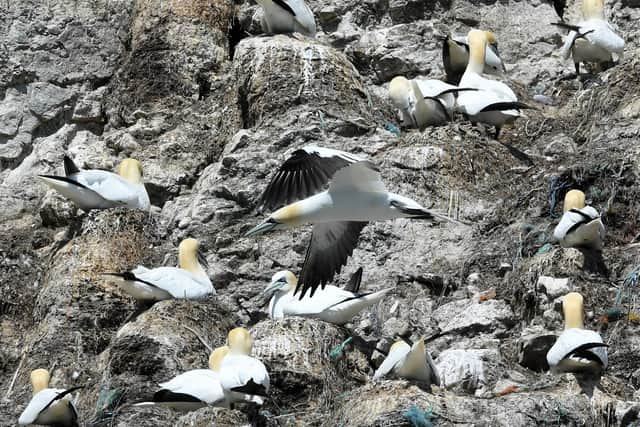Bempton Cliffs: RSPB keeps close eye on colony amid rising cases of bird flu
The recent spread of bird flu among threatened gulls and terns is gathering pace, experts from the British Trust for Ornithology said.
At least 10,000 black-headed gulls, four per cent of the total UK population, are feared to have died since the end of March.
Advertisement
Hide AdAdvertisement
Hide AdHundreds of common terns have also died, with signs of severe losses for this species still to come.


Richard Barnard, RSPB area manager, said: “Avian influenza is sadly still affecting wild and domestic bird populations, causing distressing scenes across our countryside.
“Last year, we saw the devastating impacts of avian influenza and thousands of seabirds were reported dead across the country.
“Whilst we have not confirmed any avian influenza cases at Bempton Cliffs yet this year, it is still too early in the season to rule this out and our staff continue to be vigilant, monitoring the colonies carefully and doing counts of the seabird colonies. The RSPB is urging the Government to respond to this crisis with the true urgency needed as scenes like this are not only distressing but continue to be of concern as the UK’s worst outbreak takes hold yet again across the country.”
Advertisement
Hide AdAdvertisement
Hide AdTerns and black-headed gulls don’t breed at Bempton. However it is home from March to October to around half a million breeding seabirds, including gannets, puffins, guillemots, razorbills and kittiwakes.
A bird flu outbreak at Bempton last year is believed to have killed hundreds of gannets, its largest inhabitants.
Yorkshire Belle’s skipper Peter Richardson, who takes visitors to the colony daily, weather permitting, said although they saw the occasional dead bird in the water, that wasn’t out of the ordinary.
"We’re not seeing any more (dead birds) then normal,” he said.
“Overall there are far more birds on the cliffs than when I started 41 years ago.
“There’s been a very slight reduction in gannets – we are talking 200 or so out of 13,500.”
